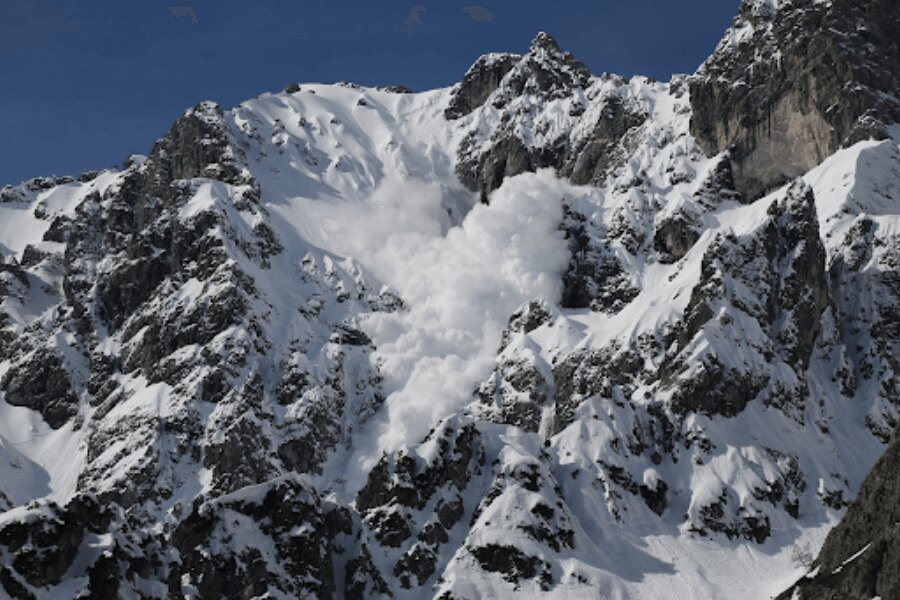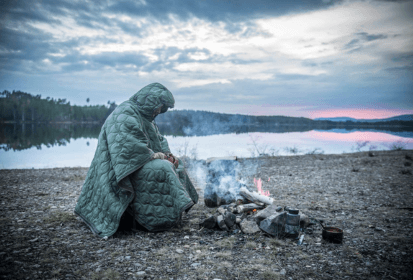All about avalanche danger
According to statistics, up to several hundred people die every year as a result of snow avalanches. Skiers, ski alpinists and climbers, who are understandably located right next to the source, are generally at the greatest risk. We have therefore prepared for you an overview of the most important information that is good to know before you go to the mountains. How is the avalanche danger here in the Czech Republic? What to pack when you go to a risk area? And what are the most common myths surrounding avalanches? Read more…
What is an avalanche?
An avalanche is a rapid and sudden movement of a large amount of snow down a slope that has the potential to bury, injure or kill a person. Most often, this is a movement of snow along a path of approximately 100 meters in length, but even here it is true that avalanches can have different ranges and different strengths.
What avalanches generally have in common is their progression through the landscape. The movement of an avalanche is divided into three parts: the release (or starting or separation) zone, the avalanche track and the accumulation zone.
- We start, of course, at the very top, where the avalanche separates and where the mass of snow is set in motion. This area is called the release zone, or separation zone.
- The loosened snow and ice gradually makes its way into the valley and overcomes tens to hundreds of meters in the process. We call this part of the avalanche path an avalanche track or transport zone.
- Finally, we have the place where the avalanche ends its journey, this is the so-called accumulation zone (deposition zone). Here the effects of the avalanche are most noticeable.
Avalanches are divided according to the method of formation into free snow avalanches, when only a small amount of snow is released from the slope, and sheet avalanches, where the entire snow sheet is released. But there are many other divisions, for example according to size.

In the Czech Republic, the occurrence of avalanches concerns our highest mountain ranges, i.e. Krkonoše, Jeseníky and Králický Sněžník. However, they are rarely found elsewhere.
How does an avalanche form?
A large number of factors contribute to the formation of avalanches. Among the largest are:
- wind – transports snow particles and deposits them in other places,
- precipitation – the more snow, the greater the danger, of course,
- air temperature – extreme temperatures and temperature fluctuations increase the risk of avalanches,
- solar radiation – increased temperature can disrupt the cohesion of snow layers,
- air humidity – plate avalanches can form in the presence of wind.
Situations with an increased risk of avalanche
Most often, when avalanches occur, we encounter 5 conditions that play into hands of the formation of an avalanche. These are increased precipitation and the associated large mass of new snow, a large amount of blown snow, an uneven layer of old and new snow, wet snow and sliding snow, when the snow cover slides on a smooth surface. In all 5 cases, there is an increased risk of avalanches.
Avalanche danger and its levels
In the Czech Republic, the occurrence of avalanches concerns our highest mountain ranges, i.e. Krkonoše, Jeseníky and Králický Sněžník. Rarely, however, they also occurred in the Beskydy Mountains or the Ore Mountains. Most often, you can encounter moderate (2) and considerable (3) levels of avalanche danger. No matter where you go, it's a good idea to keep the avalanche danger scale in mind and inform yourself about the current situation in the mountains.
Level 1
The first level represents a low risk. The snow cover is stable and well consolidated at this stage. Avalanches do not usually occur here, except for extremely steep terrain and high loads.
Level 2
The second level characterizes moderate danger. Steep slopes are usually moderately stable. As with the first stage, avalanches are only possible here on steep slopes and with a large additional load.
Level 3
Level 3 indicates a considerable risk of an avalanche. Steep slopes are moderately to weakly reinforced, which brings with it a higher risk. There is a risk of medium-sized avalanches. On steep slopes, a small additional load is enough to set the mass of snow and ice in motion.
Level 4
The fourth level announces a high risk, when the snow cover is weakly consolidated on steep slopes. On these slopes there is a risk of avalanches even with a small additional load. Spontaneous landslides of medium and large avalanches occur.
Level 5
The fifth level is carried in the spirit of a very high risk of avalanches. The snow cover is generally weakly consolidated and highly unstable. Large and very large avalanches slide spontaneously.

If you are going to a risk area, always have avalanche equipment with you.
What to do if the mass of snow starts to move?
But sometimes, despite all efforts and caution, it just happens. If you've just become part of an avalanche, it's good to keep in mind a few recommendations that will give you a better chance of escaping the mess with your life.
- The snow has moved, now what? Try to keep a cool head and do not untie your skis or snowboard at any cost. The goal of success is to outrun the avalanche.
- I am part of an avalanche, what should I do? Try to get from the main flow of the avalanche to its edge. If you have reached the edge, you can release the bindings and run away from the scene of the accident. Discard anything that isn't essential.
- There is no escape! If you cannot get out of the current, protect your head with your hands and curl up into a ball. Take a deep breath before the avalanche stops, there will be a scarcity of air soon.
After the avalanche has stopped, you have the best chance for rescue in the first 18 minutes. You can try making a small cavity around your mouth and spitting to get your bearings. If the spit lands on your face, try digging your hand up through the snow. However, experts advise to conserve as much strength as possible and not to exhaust yourself unnecessarily by kicking. Help is probably on the way.
You saw an avalanche bury a person. What now?
Of course, the most important thing is not to panic. But that's easier said than done. At least try to remember the basic lesson, which is: first call for help, only then go to the collapsed person. In this case, the Záchranka application can save you a lot of work with describing the location to the rescuers. You can also use the emergency number of the mountain service + 420 1210 (applicable for the area of the Czech Republic).
The rescuers or the mountain service will probably be on the phone with you the whole time. Follow their instructions. If you have special equipment with you, such as an avalanche probe, you can use it to search. If you find a person buried under an avalanche before rescuers arrive, try to dig a tunnel to their face to ensure an adequate supply of oxygen.
What to pack for a case of an avalanche?
Avalanche shovel, avalanche probe, airbag backpack and locator.
Avalanche shovel
Manually digging out a person trapped under an avalanche is physically demanding. After a short time digging, your fingers start to get cold and the fight with a larger mass of snow becomes much more difficult. Thanks to the shovel, you can get to the ground faster and more efficiently.
Avalanche probe
A handy tool to help you locate. The probe should be made of light material, most often it is aluminum or carbon. When choosing, also focus on the length of the probe, which should exceed 2 meters.
Airbag backpack
Airbag backpacks are important in case you find yourself trapped in an avalanche. In the event of a crisis, just pull the cord. The airbag inflates around your head and back, protecting you from impacts and giving you extra space in the event of a burying. Some types of airbag backpacks release emergency balloons that help rescuers find you faster.
Locator or beacon
It simply records your location and sends a signal that helps rescuers find you faster.
The most common avalanche myths
In conclusion, we have prepared for you several myths that are still circulating among skiers, ski alpinists and climbers.
The forest will protect me from the avalanche.
It won't protect you. Wherever you may go, an avalanche will pass, too.
Someone has been here before, so it's safe.
Unfortunately, it cannot be relied upon. Maybe you're the last straw for the slope.
There are a lot of rocks and stones, thanks to which the slope is stable.
Rocks disrupt the stability of the snow and its cohesion. Snow melts faster near them.
Today is nice, avalanches only happen in bad weather.
This myth couldn't be further from the truth. Blue skies are no guarantee of safety.
There is little snow, there is no danger.
A smaller amount of snow is a harbinger of a thin, unstable cover. Instability is a prerequisite for the formation of an avalanche.
After all, avalanches fall by themselves.
90% of avalanches are caused by skiers, snowboarders, climbers and ski alpinists. In short, the human factor.
It is very cold today, there are no avalanches.
In long-term low temperatures, snow layers do not connect, which leads to an increased risk of avalanches.
It squeaks nicely under my board, so the snow stabilizes.
Not at all. These sounds strongly warn you of instability and a high risk of snow mass release.
Readers are further interested












































































































































